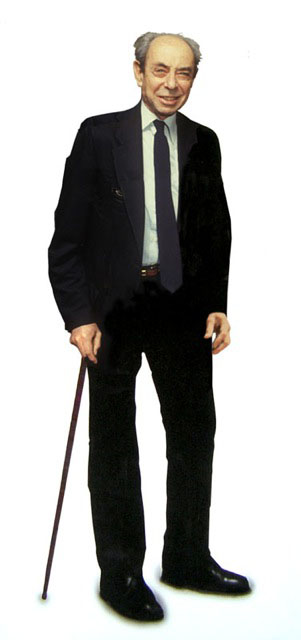Frank Oppenheimer (1912-1985) was an American particle physicist.
In 1941, Oppenheimer began work at the University of California Radiation Laboratory, where he was a group leader in uranium isotope separation under Ernest Lawrence. A few years later, Oppenheimer received an invitation from his brother Robert to conduct research for the Manhattan Project. He went to Oak Ridge to monitor the equipment at the Y-12 plant in 1945, then moved to Los Alamos later that year, where he became executive officer to Kenneth Bainbridge and worked on planning and conducting the Trinity bomb test in July 1945.
As the Cold War intensified, Oppenheimer was called before the House Un-American Activities Committee in 1949. During testimony he admitted that he and his wife Jackie had been members of the Communist Party for several years. The ensuing controversy led to Oppenheimer’s resignation from his post as assistant professor of physics at the University of Minnesota, which he had assumed two years prior. Oppenheimer was unable to find another university-level teaching position for a decade.
During this time, Oppenheimer maintained a cattle ranch with his wife in Colorado and became a science teacher at a local high school. He began to take interest in developing improvements in science education.
Scientific Contributions
In 1965, Frank was awarded a Guggenheim Fellowship to do research at University College London. While there, he visited the Science Museum’s Children’s Gallery, and decided to build his own, and better, interactive science museum.
Soon after his trip to London, Oppenheimer received funding from the National Science Foundation to develop new pedagogical methods in science education.He revamped the teaching laboratory at the University of Colorado, creating the “library of experiments” – nearly one hundred models of classical laboratory experiments which could be used in aiding the teaching of physics to elementary school children. In 1969, Oppenheimer opened an interactive science museum, the Exploratorium, in San Francisco. Frank served as director at the museum for 16 years.





